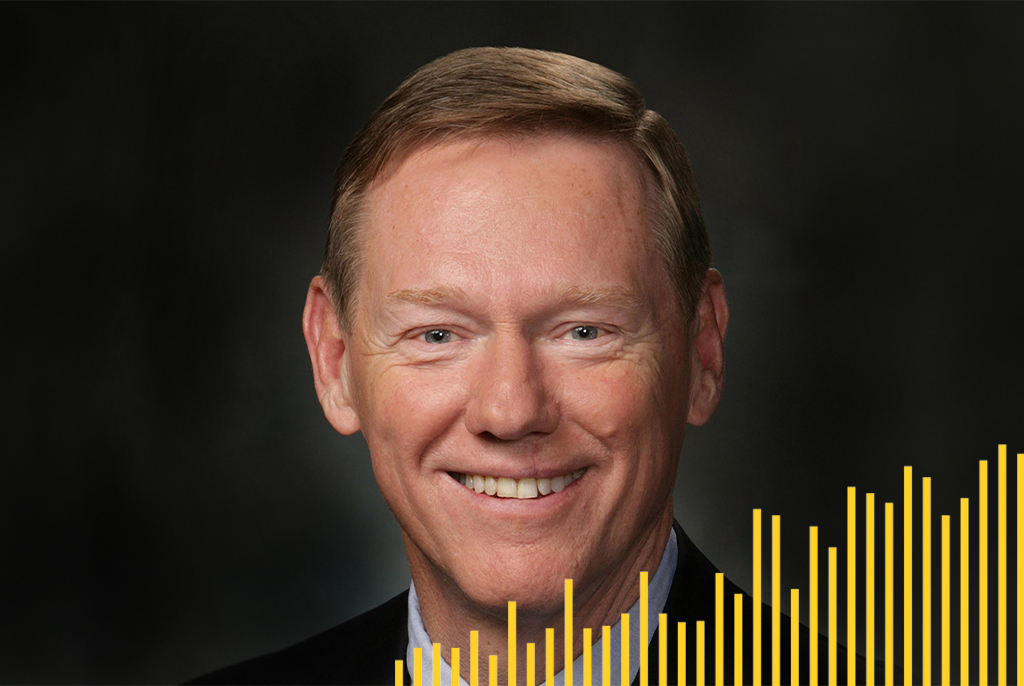Alan Mulally Module 4: Three Questions for Self-Awareness

Everyone has blind spots. That doesn’t mean you can’t shine a light on them.
In this module, former Boeing and Ford CEO Alan Mulally offers 3 questions to ask yourself to better understand who you are, how you act and what others think.
The need for self-awareness
Does self-awareness have a place in the Principles and Practices? Yes, says Mulally. It’s not only built into the practices — Remember: Respect, listen, help and appreciate each other — it also imparts humility, a necessary trait in leadership.
Mulally based his “3 questions” model on the work of Dr. Marilyn Gist, professor emerita at Seattle University’s Albers School of Business and Economics, where she served as executive director of the school’s Center for Leadership Formation. While at Albers, Gist introduced a curriculum for incoming MBA students that included a self-awareness assessment.
The assessment introduced students to the need for leader humility in organizations and gave them time to work on themselves throughout the MBA program, Mulally says. A final semester capstone project focused on giving back and gave them the chance to “practice [their] humility.”
The 3 questions
Building off of the assessment and model Gist shares in her book, The Extraordinary Power of Leader Humility, Mulally constructed 3 questions that everyone should ask themselves.
“These are the three blind spots that you can always check,” Mulally says. “Think of the 3 questions that every one of us … everyone that’s listening today, you and me, our family … 3 questions they have when they meet a leader.”
Who are you?
Mulally’s first question focuses on identity and motivations.
“My first question is, who are you?” he asks. “Why are you here? Are you doing this for money, for prestige, for glory? Are you doing this to make a contribution, to accomplish the organization’s objectives? Is it about you?”
Mulally then introduces 3 scales:
- The “Me-to-us” scale
- The “I-to-we” scale
- The “Me-to-service” scale
The scales, Mulally says, are important because they help leaders shift their thinking toward being of service and enabling others. “Where are you on there? Is this all about you or is this about all of us and what we’re trying to accomplish — this compelling vision for the greater good?” he asks.
Where are we going?
The second question focuses on purpose and direction, Mulally says. When you have been asked to be the leader, “the most important thing you do is pull [everyone] together around a compelling vision of comprehensive strategy and [a] relentless implementation plan.”
The next step is holding people accountable for nurturing others and “using this wonderful culture to do it,” he says.
“Imagine everything we just talked about. Are you sharing that with everybody? Whether you’re in the middle of an organization, or whether you’re at the top of the organization. Are you actually sharing the things that we talked about today?” Mulally asks. “Think about how respectful it is to share with everybody what the problems are: the yellows and the reds.”
Sharing “reds” is a big problem in leadership, Mulally says. Many CEOs are reluctant to show any issues or challenges, especially when they’re still working on a solution.
“They think it’s a failure if they’re ever on red,” Mulally says.
But by asking these questions, and sharing this exercise with team members, you’ll see them adopt new behaviors outlined in the Principles and Practices. Mulally recalls a business plan review meeting early into his tenure at Ford. During the meeting, one of his executives shared his first red — an issue where a solution had yet to be found.
“I started to clap,” Mulally says. “And then I turned to everybody and I said, ‘Any initial thoughts on how we can help Mark [the executive]?’ And three leaders had something to say. It was so different than their [earlier] behavior.”
Do you see me?
This last question focuses on recognizing and appreciating the people you work with, Mulally says.
“How many times have you met somebody, [shook] their hand and by the time your hands touched, their eye contact [had] already moved on to the next person?” he asks.
The point of “Do you see me?” is to take the time and let team members know their contributions are both seen and appreciated, Mulally says. Tell them: “I’m so glad you’re here. Thank you for your help.”
“You know when somebody sees you,” he says. “And you’re going to get [more] from them if they believe that you see them and believe in them and want them, and appreciate them.”
Related Resources
Category : Leadership
Topics : Open Questions, Peak Performer, Self-Awareness
